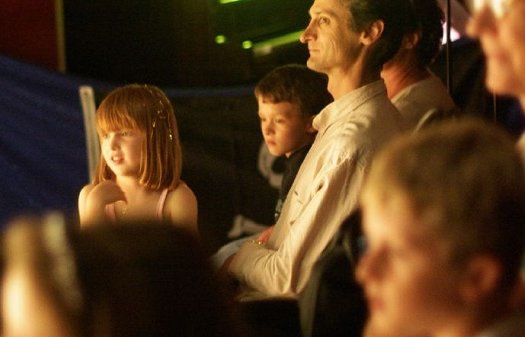
Photo: Vanessa Pike-Russell (CC BY-NC-ND 2.0)
Who is family theatre for?
Creating and producing family theatre has led Harper Ray to reconsider his audience and cast aside some misconceptions.
As a theatre maker I am used to considering the needs, wants and expectations of diverse audiences, having worked in burlesque and children's theatre, with classically staged Shakespeare and large-scale aerial installations. Each time the challenge of anticipating new audiences was part of the artistic process, but my recent journey into creating family theatre has taken me back to the drawing board and to some rather speedy ‘unlearning’.
The first misconception was that ‘family’ is a term or a programming bracket. It helps when marketing a show that has a broad appeal but it does not hold a programming focus in its own right. Family is a personal experience, imbued with emotion, memory, hope and heritage and will mean something different to each audience member.
By mentally combining your audience of both adult and child, there are many new opportunities
The second misconception is that family theatre is children’s theatre. Every year thousands of children are taken to the theatre and hopefully they enjoy the show they see and later become theatre patrons themselves. But what of the adult who paid for the tickets? Great children’s theatre is expertly designed to play to an audience of children, sometimes with the odd risqué joke or reference thrown in. But adults are not the target market for children’s theatre.
The third misconception is that family theatre is a show that the whole family can come to. No, it’s really not. It is a show the whole family wants to come to! Apply that single word to your artistic choices and it changes everything.
So what does family theatre look like? I looked outside the conventional audience research in theatre and towards the business of television and film. Unlike theatre, film and television have always segmented their audiences differently. As well as children's and adult, family has been a named category. This was partly historic as the old Hollywood film certificates were created with these categories to reinforce family values. So studios were forced to consider the family in a way that the theatre industry has not.
So I began to ask of every artistic choice: Does this play to both adult and child alike? Does it speak to them as a team, a unit and a collection of theatre goers? I tried to never mentally split the audience into sub-groups of child and adults. I felt that if I did we risked alienating one group or worse patronising them all. Walt Disney once said: "You’re dead if you aim only for kids. Adults are only kids grown up, anyway." Love it or hate it, Disney is very successful at what it does and survives on this ‘multi-segmentational’ artistic strategy. Take Toy Story, a modern classic in terms of the family film. It is a sophisticated and compelling piece of storytelling that works simultaneously on multiple levels. It is comedic, dark, magical, dangerous, bizarre, poignant and silly to varying degrees.
Sherbert Research, a market research consultancy which works exclusively with children and families, are industry experts in targeting the whole family. Managing director Nicki Karet says: “Families make decisions as a unit and kids often take part from a young age or even lead the discussion when it comes to what they're going to do in the holidays, at the weekend, or even what car they might buy. Kids along with their families are today's decision-makers.”
By mentally combining your audience of both adult and child, there are many new opportunities. For children we can go to darker or more challenging story points, knowing that they are not experiencing this alone, but with their family to help contextualise the story or support them. For adults we can break the rule that theatre is observed in silence while the actors do the work, and instead plunge them into immersive or interactive experiences, knowing that children thrive on this model. Opportunities to draw our enjoyment from the strengths of other family members is a wonderful aspect of the family genre. At its best, family theatre can be the start of shared memories or exchanges which reinforce family solidarity. Their shared experience and personal perspectives give rise to conversations long after the curtain has gone down.
As artists and programmers, we should be led by artistic integrity and a commitment to our audiences. The emergence of family as a presence, as championed by organisations such as the Family Arts Campaign, is for me the beginning of a whole new adventure, one that I can’t wait to carry on exploring.
Harper Ray is a maker of immersive and interactive theatre.

Join the Discussion
You must be logged in to post a comment.